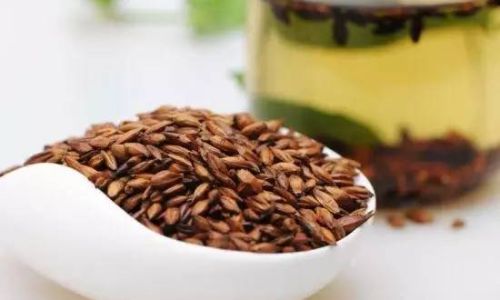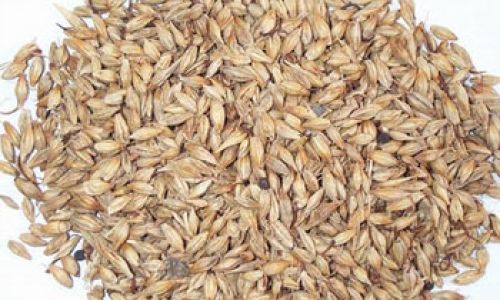Introduction
Stir-frying is a culinary technique that has transcended borders, beloved for its ability to transform fresh ingredients into vibrant, flavorful dishes with minimal effort. Among the rainbow of vegetables available, red-hued produce like red cabbage, red bell peppers, radishes, and even red onions add a striking visual appeal and a subtle sweetness to stir-fries. This article explores the secrets to crafting a restaurant-quality stir-fried red vegetable dish at home, focusing on simplicity, speed, and bursting with natural flavors. Whether you’re a busy parent, a novice cook, or a seasoned food enthusiast, this guide will equip you with the knowledge to create a dish that’s both nutritious and deeply satisfying.
The Allure of Red Vegetables
Red vegetables are not just visually stunning—they’re nutritional powerhouses. Rich in antioxidants like anthocyanins and vitamins A and C, they offer anti-inflammatory benefits and support immune health. Red cabbage, for instance, is crunchy and slightly peppery when raw, but mellows into a tender, earthy delight when cooked. Red bell peppers bring a juicy sweetness, while radishes offer a peppery kick. Combining these ingredients creates a symphony of textures and flavors that elevate any meal.
Selecting the Right Ingredients
The foundation of a great stir-fry lies in ingredient quality. When shopping for red vegetables:

- Red Cabbage: Choose firm heads with crisp, vivid leaves. Avoid wilted or bruised specimens.
- Red Bell Peppers: Opt for glossy, unblemished peppers with taut skin. Their sweetness intensifies when cooked.
- Radishes: Select small to medium radishes with vibrant color and firm roots. Larger radishes may be woody.
- Aromatics: Fresh garlic, ginger, and scallions are non-negotiable for depth of flavor.
- Protein (Optional): Tofu, tempeh, or edamame can add protein without complicating the dish.
Preparation: The Key to Even Cooking
- Washing and Drying: Rinse vegetables under cold water to remove dirt. Pat dry thoroughly—excess moisture can turn a stir-fry into a steamed dish.
- Uniform Cutting: Slice vegetables into bite-sized pieces of similar thickness to ensure even cooking. For red cabbage, shred it thinly; dice bell peppers into 1-inch strips; slice radishes into rounds or half-moons.
- Marinating (Optional): Tossing vegetables in a splash of rice vinegar or a pinch of salt 10 minutes before cooking can tenderize them slightly and enhance flavor.
The Stir-Frying Technique: Heat and Speed
Stir-frying is a high-heat, quick-cooking method that preserves texture and nutrients. Here’s how to master it:
- Wok or Skillet: A carbon-steel wok is traditional, but a large stainless-steel or cast-iron skillet works well. Ensure it’s seasoned to prevent sticking.
- Heat Control: Preheat the pan over medium-high to high heat until a drop of water evaporates instantly. Add oil (neutral like vegetable or toasted sesame) and swirl to coat.
- Aromatics First: Add minced garlic and ginger, stirring constantly for 30 seconds to release their fragrance without burning.
- Layering Ingredients: Start with denser vegetables like red cabbage, stirring frequently. After 2-3 minutes, add quicker-cooking items like bell peppers and radishes.
- Searing for Flavor: Allow vegetables to caramelize slightly between stirs. This Maillard reaction develops depth and complexity.
Seasoning: Balancing Flavors
The right seasonings can elevate a simple stir-fry into something extraordinary. Consider these combinations:
- Soy Sauce Base: A classic choice. Use low-sodium soy sauce to control saltiness.
- Oyster Sauce: For umami richness (vegan alternatives available).
- Vinegar: Rice vinegar or apple cider vinegar adds acidity to cut through richness.
- Sweeteners: A teaspoon of honey or maple syrup balances bitterness.
- Spices: A pinch of red pepper flakes or Sichuan peppercorns introduces heat.
- Herbs: Fresh cilantro, basil, or mint added at the end brighten the dish.
Advanced Tips for Gourmet Results
- Velveting Vegetables: For extra tenderness, briefly blanch red cabbage in boiling water before stir-frying.
- Toasting Nuts: Sprinkle toasted sesame seeds or crushed peanuts over the finished dish for crunch.
- Fermented Notes: A splash of kimchi brine or miso paste adds complexity.
- Charred Edges: For a smoky flavor, cook vegetables in batches to avoid overcrowding, allowing some pieces to blacken slightly.
Troubleshooting Common Issues
- Soggy Vegetables: Overcrowding the pan traps steam. Cook in batches if needed.
- Uneven Cooking: Inconsistent cutting sizes lead to some pieces being overcooked or raw.
- Bland Taste: Amplify seasoning gradually. Taste and adjust salt, acid, or sweetness.
Health Benefits: A Nutritional Powerhouse
Stir-fried red vegetables are a low-calorie, high-fiber meal packed with vitamins and minerals. Red cabbage, in particular, is rich in vitamin K and antioxidants linked to heart health. The dish is also gluten-free and easily adaptable for vegan or keto diets by adjusting seasonings and proteins.

Serving Suggestions
- As a Side: Pair with grilled chicken, salmon, or tofu for a balanced meal.
- Over Grains: Serve atop brown rice, quinoa, or cauliflower rice for a hearty bowl.
- In Wraps: Use lettuce leaves or tortillas for a handheld version.
- Cold Noodle Salad: Toss with soba noodles and a sesame dressing for a refreshing twist.
Cultural Variations
Stir-frying is central to Asian cuisines, but red vegetables appear globally:
- Korean Kimchi: Fermented red cabbage is a staple.
- Mexican Escabeche: Pickled red onions add zing to tacos.
- Eastern European Borscht: Beet-based soup with red cabbage.
Conclusion
Stir-fried red vegetables are a testament to the beauty of simplicity. By focusing on fresh ingredients, precise heat control, and thoughtful seasoning, even a novice cook can create a dish that rivals takeout. Experiment with ingredient combinations—try adding pineapple chunks for sweetness or cashews for richness. The key is to embrace the process, adjust to your taste, and savor the vibrant results. Whether you’re cooking for one or a crowd, this dish promises to deliver flavor, nutrition, and a touch of culinary magic.
Final Thoughts
The next time you’re at the market, grab a bunch of red vegetables and let your wok (or skillet) work its wonders. With practice, you’ll develop an intuition for balancing flavors and textures, turning a simple stir-fry into a canvas for creativity. Bon appétit!






0 comments